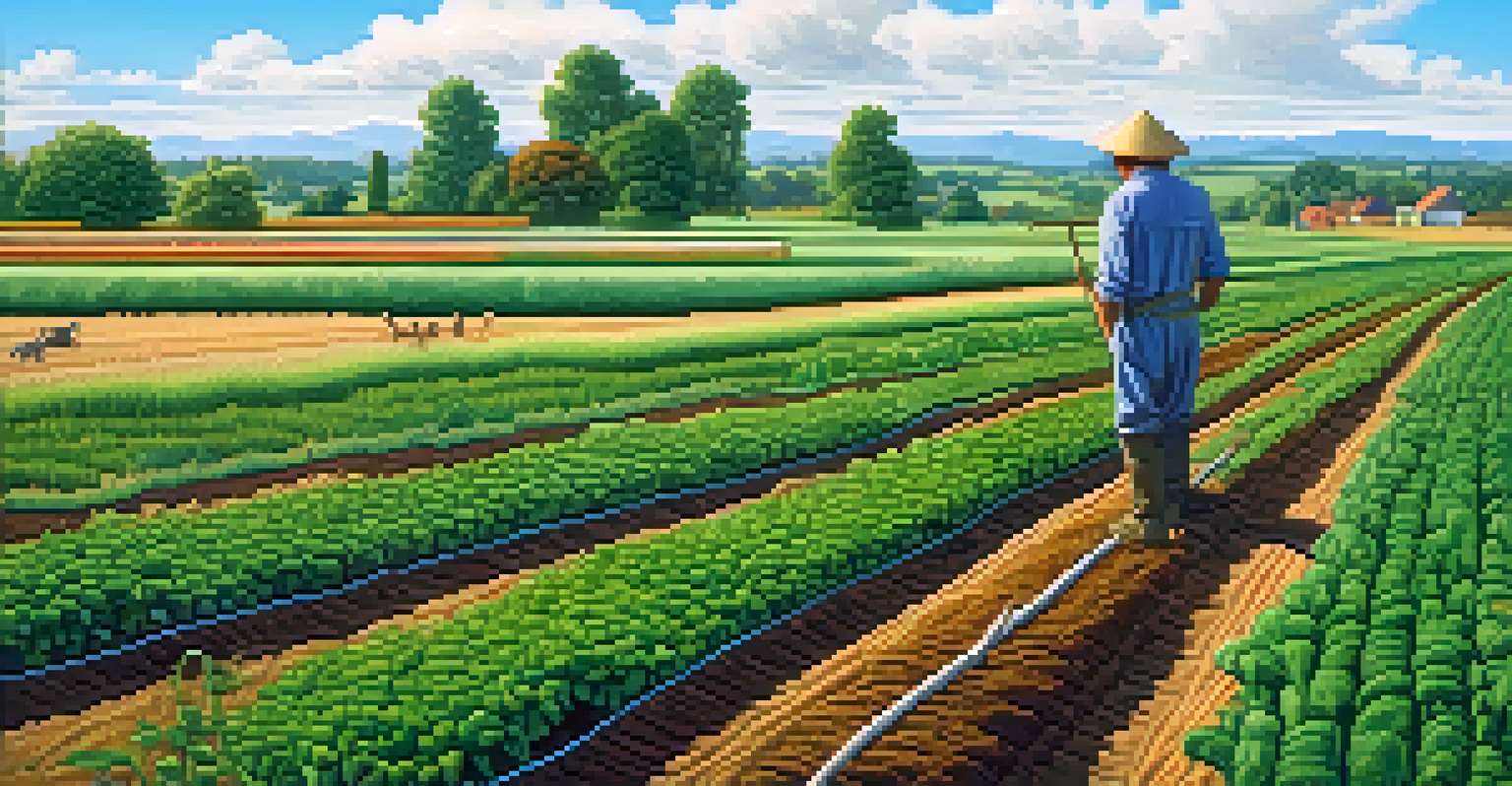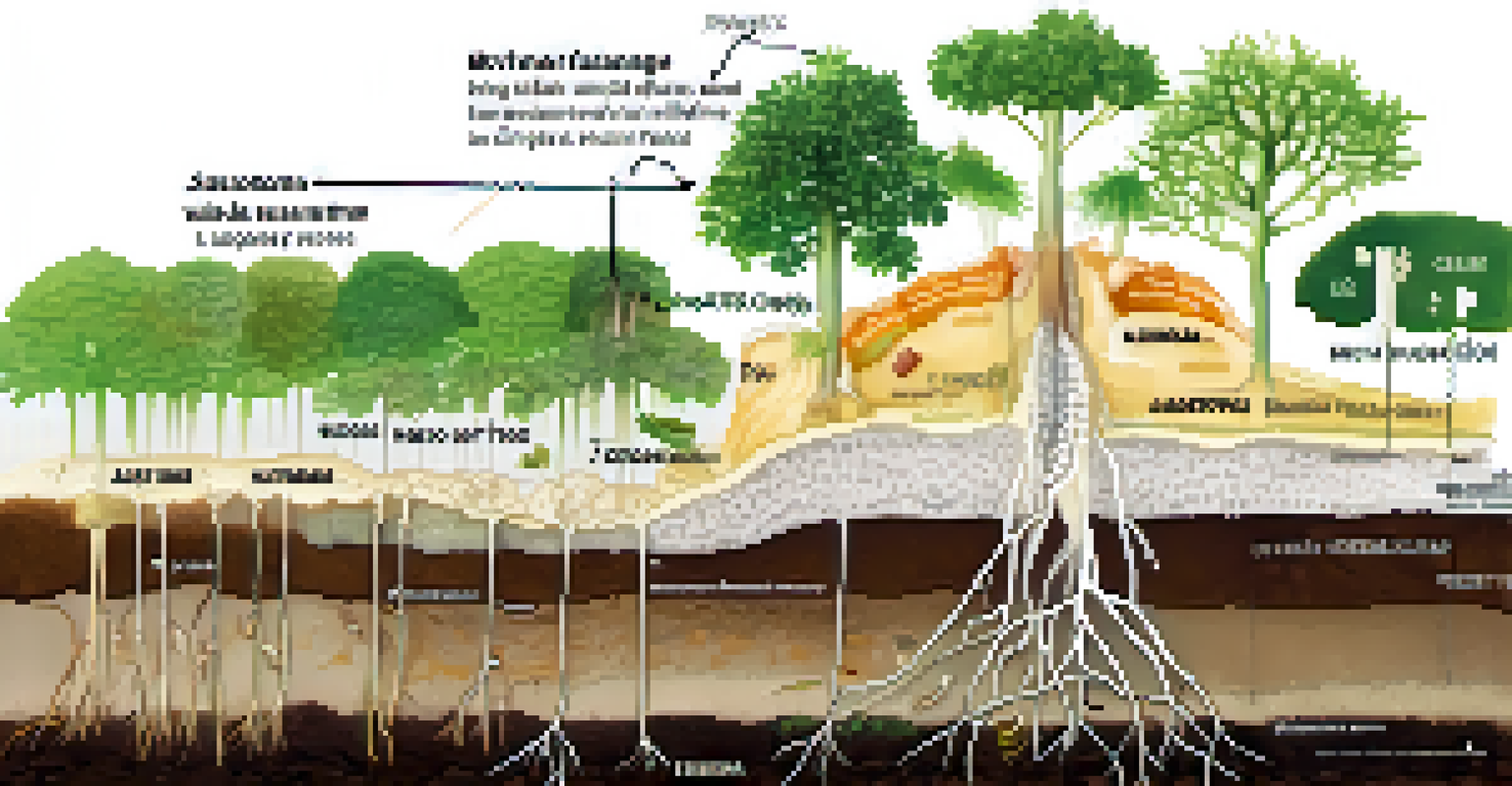Mycorrhizal Fungi: Nature's Helpers in Nutrient Exchange

What Are Mycorrhizal Fungi and Their Role?
Mycorrhizal fungi are remarkable organisms that form symbiotic relationships with plant roots. These fungi extend their hyphae—thin, thread-like structures—into the soil, allowing them to absorb nutrients and water more efficiently than roots alone. This partnership benefits both parties: plants provide the fungi with carbohydrates produced through photosynthesis, while the fungi supply essential nutrients like phosphorus.
The soil is a living organism, and it is the fungi that are the facilitators of the soil's health.
This relationship is not just beneficial; it's vital for many plant species. In fact, about 90% of terrestrial plants depend on these fungi to thrive. Without mycorrhizal networks, many plants would struggle to access the nutrients they need for growth and survival, illustrating the integral role these fungi play in ecosystems.
Moreover, mycorrhizal fungi help enhance soil health by improving its structure and increasing its ability to hold water. This means healthier plants and more resilient ecosystems, showcasing how these tiny organisms are truly nature's helpers.
Types of Mycorrhizal Fungi: Ectomycorrhizae vs. Endomycorrhizae
There are two primary types of mycorrhizal fungi: ectomycorrhizae and endomycorrhizae. Ectomycorrhizae form a protective sheath around the root tips and primarily associate with trees, like oaks and pines. This type of mycorrhiza helps trees absorb nutrients from the soil while also shielding them from pathogens.

On the other hand, endomycorrhizae penetrate the root cells, forming structures called arbuscules that facilitate nutrient exchange directly within the plant. This type is more common in herbaceous plants and many crops, highlighting the versatility of mycorrhizal fungi across different plant species.
Mycorrhizal Fungi Boost Plant Growth
These fungi form essential partnerships with plants, enhancing nutrient absorption and overall health.
Understanding these types is crucial for anyone interested in gardening or agriculture, as it allows for better selection of plant companions and soil management practices that enhance these beneficial relationships.
The Nutrient Exchange Process Explained
The nutrient exchange process between mycorrhizal fungi and plants is fascinating and efficient. While plants produce sugars through photosynthesis, they share a portion of these sugars with the fungi in exchange for nutrients like nitrogen and phosphorus. This exchange is a prime example of mutualism, where both organisms benefit from the relationship.
Nature does not hurry, yet everything is accomplished.
Fungi are incredibly efficient at breaking down complex organic materials in the soil, which allows them to access nutrients that plants cannot reach on their own. This means that by forming these partnerships, plants can tap into a vast reservoir of nutrients, promoting healthier growth and resilience.
Additionally, mycorrhizal networks can connect multiple plants, allowing them to share nutrients and even communicate distress signals about environmental stresses, such as drought or pest attacks. This interconnectedness highlights the importance of these fungi in maintaining ecosystem balance.
Benefits of Mycorrhizal Fungi for Plants
The benefits of mycorrhizal fungi extend far beyond nutrient exchange. These fungi improve plant drought resistance by enhancing root systems and water absorption capabilities. This is especially crucial in regions where water is scarce, as mycorrhizal associations can help plants survive and flourish.
Moreover, they play a vital role in soil health by increasing microbial diversity and organic matter decomposition. This not only enriches the soil but also supports a variety of plant life, fostering a more resilient ecosystem overall.
Types of Mycorrhizal Fungi Explained
Ectomycorrhizae and endomycorrhizae serve different plants, offering unique benefits and adaptations.
Lastly, plants associated with mycorrhizal fungi often show increased resistance to diseases and pests. By bolstering their immune response through this partnership, plants can thrive in environments that would otherwise be challenging.
The Role of Mycorrhizal Fungi in Agriculture
In agricultural settings, mycorrhizal fungi can significantly enhance crop yields and soil health. Farmers who understand how to harness these fungi can reduce the need for chemical fertilizers, leading to more sustainable farming practices. By inoculating soils with mycorrhizal spores, they can create an optimal environment for plants to thrive.
The use of mycorrhizal fungi not only improves nutrient uptake but also enhances soil structure, promoting better water retention and aeration. This creates a more favorable environment for plant roots, resulting in healthier and more resilient crops.
As the farming community increasingly shifts towards sustainable practices, mycorrhizal fungi represent a natural solution to enhance productivity while minimizing environmental impact. This could be a game-changer in the quest for more sustainable agriculture.
Mycorrhizal Fungi and Climate Change Resilience
With climate change posing new challenges for agriculture and ecosystems, mycorrhizal fungi offer hope for resilience. By improving nutrient and water uptake, these fungi can help plants cope with the stresses of climate variability, such as droughts or nutrient-poor soils. This resilience is crucial for maintaining food security in a changing climate.
Additionally, mycorrhizal fungi contribute to carbon sequestration in soils. By facilitating plant growth and enhancing soil structure, they help store carbon dioxide, mitigating the effects of climate change. This dual role as both a facilitator of plant health and a carbon sink makes them invaluable allies in the fight against global warming.
Fungi Aid Climate Change Resilience
Mycorrhizal fungi improve plant resilience against climate stress and contribute to carbon sequestration.
Promoting the health of mycorrhizal fungi in natural and agricultural systems could be a key strategy for enhancing ecosystem resilience in the face of climate change.
Practical Tips for Encouraging Mycorrhizal Growth
If you're looking to promote mycorrhizal fungi in your garden or farm, there are several practical steps you can take. Start by avoiding chemical fertilizers and pesticides, which can harm these valuable organisms. Instead, opt for organic practices that enhance soil health and encourage fungal growth.
Incorporating organic matter, such as compost or mulch, can create a hospitable environment for mycorrhizal fungi. These materials not only provide nutrients but also improve soil structure, making it easier for fungi to thrive and form beneficial relationships with plant roots.

Lastly, consider planting a diverse range of species in your garden or farm. Different plants support different types of mycorrhizal fungi, so a diverse ecosystem will foster a more robust network of these beneficial organisms, leading to healthier plants and soil.